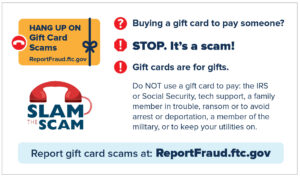17 Best Black Dress Shoes For Men in 2025
Dec 26, 2025Protect Yourself from Imposters – Talking About Men’s Health
- Feb 19, 2025
- 0 Comments
240

Protect Yourself from Imposters
Featured Article Quoted by the Social Security Administration
Social Security imposter scams continue to be widespread across the United States.
These scams are designed to deceive individuals into providing sensitive personal information or money under false pretenses. Scammers often pose as Social Security employees, using a variety of tactics to create panic and pressure their victims into complying with fraudulent demands.
The Social Security Administration warns, “Scammers use tactics to deceive you into providing sensitive information or money. If you receive a suspicious letter, text, email, or call, do not respond.” This simple yet powerful advice serves as the first line of defense against fraudsters.
Recognizing Social Security Imposter Scams
One of the most critical steps in preventing fraud is recognizing the warning signs.
The Social Security Administration (SSA) clearly states they will NEVER:
- “Text or email images of an employee’s official government identification.”
- “Suspend your Social Security number.”
- “Threaten you with arrest or other legal action unless you immediately pay a fine or fee.”
- “Require payment by retail gift card, wire transfer, internet currency, or cash by mail.”
- “Promise a benefit increase or other assistance in exchange for payment.”
- “Mail or email ‘official’ letters or reports containing your personal information.”
If you encounter any of these tactics, it’s a clear sign of a scam. The SSA takes the privacy and security of your information seriously and would never engage in such questionable practices.
How Social Security Communicates with You
Understanding how the SSA legitimately communicates with the public can help you distinguish between real and fraudulent messages. The SSA clarifies, “We only send text messages in limited situations, including: When you have subscribed to receive updates and notifications by text [and] as part of our enhanced security when accessing your personal my Social Security account.”
Additionally, if you owe money to Social Security, “we will mail you a letter with payment options and appeal rights.” The SSA does not demand payment through aggressive phone calls or suspicious online requests.
The SSA does contact the public by phone, but only in specific circumstances. According to the SSA, “Ordinarily, the agency calls people who have recently applied for a Social Security benefit, are already receiving payments and require an update to their record or have requested a phone call from the agency.” If there’s an issue with your Social Security number or record, “Social Security will typically mail a letter.” These official procedures ensure that sensitive information is communicated securely and transparently.
What to Do If You Receive a Suspicious Communication
If you receive an unexpected or suspicious communication claiming to be from Social Security, follow these essential steps to protect yourself:
- Do not respond. The Social Security Administration emphasizes, “If you receive a suspicious letter, text, email, or call, do not respond.” Ignoring fraudulent communications is the first step in safeguarding your personal information.
- Do not click on links or download attachments. Scammers often use malicious links to steal information or install harmful software on your devices.
- Do not provide personal information. Never share your Social Security number, bank account details, or other sensitive data unless you have verified the legitimacy of the request.
- Hang up immediately if you receive a threatening call. The SSA explicitly states, “We will NEVER threaten you with arrest or other legal action unless you immediately pay a fine or fee.” This tactic is a common scammer strategy to create fear and urgency.
- Verify through official channels. If you are unsure about a communication, contact Social Security directly by visiting their official website or calling their verified phone number.
- Report the scam. The SSA advises, “Report suspected Social Security imposter scams — and other Social Security fraud — to the OIG’s website at oig.ssa.gov/report.” By reporting these incidents, you help authorities track and shut down fraudulent operations.
Share This Information to Protect Others
Scammers prey on individuals who may not be aware of their tactics. By sharing this information, you can help protect your friends, family, and colleagues from becoming victims. The SSA encourages, “Please share this information with your friends, family, and colleagues to help spread awareness about Social Security imposter scams.”
Fraudulent activities can impact anyone, but with increased awareness and vigilance, we can reduce the number of people falling prey to these schemes. Encourage your loved ones to stay informed and direct them to resources like www.ssa.gov/scam for the most up-to-date information on how to identify and prevent scams.
Final Thoughts
Scammers continue to evolve their tactics, but by staying informed and aware, you can avoid falling victim to Social Security fraud.
Remember the SSA’s clear guidelines:
- “We will NEVER text or email images of an employee’s official government identification.”
- “We will NEVER suspend your Social Security number.”
- “We will NEVER require payment by retail gift card, wire transfer, internet currency, or cash by mail.”
By recognizing these red flags and understanding how the SSA genuinely operates, you can protect yourself and your community. Always verify suspicious communications through official channels, and don’t hesitate to report any fraudulent activity.
Together, we can create a more informed and scam-resistant society.
Stay vigilant, stay safe, and share this knowledge to help others protect themselves from Social Security imposter scams.
Publisher: Source link








